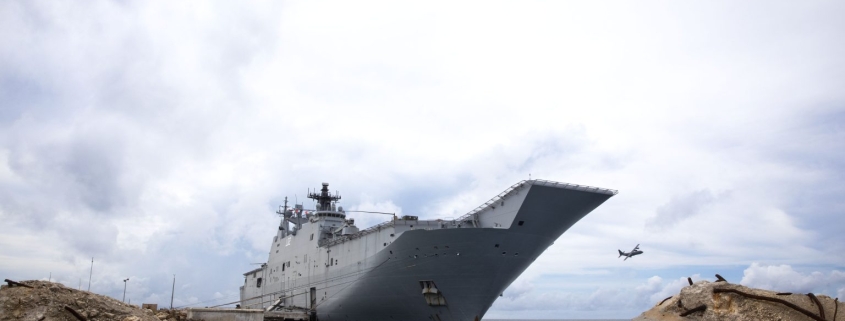Humanitarian assistance in the Pacific should be led by Pacific countries
In the Pacific, the rush among partner countries to be seen as the first to assist after disasters has become heated as part of ongoing geopolitical contest. As partners compete for strategic influence in the region, humanitarian interests should not be sidelined.
Instead, partners to Pacific island countries can advance both humanitarian and political interests by prioritising humanitarian assistance and disaster relief (HADR) initiatives that are Pacific-led, resilience-based and—ideally—Pacific-owned.
Not only is HADR important for meeting humanitarian needs; it helps partner countries gain visibility and strengthen relationships. When Cyclone Yasa hit Fiji in 2020, Richard Marles, acting Labor leader at the time, emphasised the importance of Australian readiness to support Fiji. He suggested that Australia should ‘remain the natural partner of choice for the countries of the Pacific and central to that is our standing ready to provide whatever assistance is required.’ Australia has since demonstrated this readiness, for example by deploying its first relief flight within 24 hours of the 7.2-magnitude earthquake that struck Vanuatu in December 2024.
HADR operations also provide opportunities for signalling capability. China did so when it displayed its range of military capabilities, deploying army vessels and planes in response to disasters in Tonga and Vanuatu. Furthermore, HADR exercises such as Bhakti Kanyini, a multinational exercise conducted in Darwin in 2024, can improve interoperability among partners and support collective responses.
However, we have observed that these cooperative dynamics are now increasingly marked by contestation among partners. For example, French officials noted that France and the European Union were initially omitted from reporting on HADR efforts in Tonga in 2022, with reports largely crediting only Australia and New Zealand. Competition between external actors can also lead to miscommunication and impede the delivery of assistance, as Australia and China found during the 2020 response to Cyclone Harold in Vanuatu.
New HADR initiatives also raise old questions about how militaries, often among the first on the scene to offer support, can effectively interact and coordinate with other military and civilian-military partners.
Our story map of HADR architecture shows how traditional alliances that support HADR, including the FRANZ (France, Australia, New Zealand) arrangement and the Quad, have been joined by newer initiatives such as the Australia-led Pacific Response Group and the Pacific Humanitarian Warehousing Program, which is supported by Partners in the Blue Pacific and France.
But these initiatives are led by partners, not Pacific island countries. An earlier justification for this was that only Fiji, Tonga and PNG have militaries. However, these militaries are now noticeably far more involved in regional disaster responses, and their national disaster management offices are taking the lead.
Partners can advance humanitarian interests in the region by minimising contestation and competition around HADR. They should share knowledge and expectations, strengthening preparedness and supporting predictability. These partners should develop a Pacific islands-centric handbook on disaster management that captures disaster risk profiles, national frameworks and actors for disaster management, as well as arrangements for requesting assistance and civil-military coordination approaches in different countries.
The United Nations has set out basic guidelines in this area, but the document does not detail country-specific policies, frameworks or responsibilities of national actors. And while the UN has, in recent years, created a set of recommended practices based on lessons learned, it is unclear how these have been adopted at the national level in Pacific countries, each of which has unique structures, protocols and systems. A regional handbook would be a useful way to establish local approaches to effective civil-military interaction and coordination of disaster relief.
This initiative should be developed through the Pacific Disaster Risk Reduction Ministers Meeting, which could help ensure that the outcomes reflect Pacific priorities, preferences and needs. It should work within the existing regional security architecture while avoiding duplication, a key issue under the 2018 Boe Declaration on Regional Security.
By capturing current processes and arrangements, a handbook would also be a useful resource in the development of regional standard operating procedures and coordination mechanism for HADR, key actions proposed within the Boe Declaration Action Plan.
The Pacific is one of the world’s most disaster-prone regions, and climate change is only increasing the destructive power of weather events such as tropical cyclones. Partners of Pacific island countries need to prepare accordingly. They must support Pacific-led preparedness initiatives so that they can build shared knowledge and mutual understanding, strengthen partnerships and meet future humanitarian needs.


